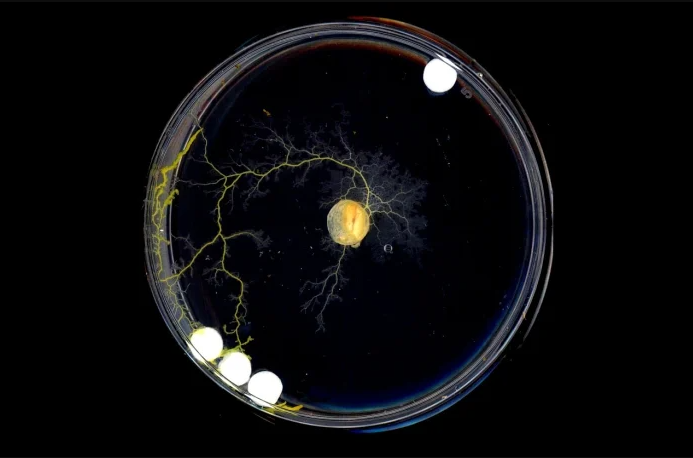Scientists have been studying the mold Physarum polycephalum for many years. Although this organism lacks a brain or
Physarum polycephalum itself is veryan unusual living organism. As you know, this is not a mushroom, not an animal, and at the same time not a plant. This living creature belongs to the group of protists - all forms of life that do not belong to the above three groups.
Vegetative stagePhysarum polycephalumis a plasmodium (one largecell with many nuclei). The myxomycete has a bright yellow color and can crawl at a speed of up to 4 centimeters per hour. Found in shady, cool, damp places such as decaying leaves and parts of trees. Like slime molds in general, it is sensitive to light; in particular, light can repel myxomycetes and cause spore formation.
The species became widely known after being exhibited at the Paris Zoo, where the organism was named "blob".
This life form is found in dark and damp places, such as the forest floor. There it processes organic matter and then returns it back to the food chain.
 (Nirosh Murugan, Levin Laboratory, Tufts University and Wyss Institute at Harvard University)
(Nirosh Murugan, Levin Laboratory, Tufts University and Wyss Institute at Harvard University)
Despite the fact thatPhysarum polycephalumno brain, he is capable of solving problems.The body is capable of learning: scientists managed to teach it to ignore substances harmful to it, and with repeated experiments a year later, it was able to demonstrate the same skills.
Physarum polycephalumis able to exchange information: during the experiment, scientists “taught” 2000 myxomycetes not to be afraid of salt, and then formed pairs of “experienced” “blobs” and “inexperienced ones.”
In their study, scientists observed how thisthe body overcomes labyrinths and memorizes new substances for several months. He can also remember places where he previously found food, and share memories with other cells of his kind. The authors of the new study note that this is incredible for an organism that does not have a brain or nervous system.
Analyzing changes in cell structuremold, scientists discovered that single-celled organisms made this decision because of their ability to remotely “feel” objects and determine their approximate shape. They are able to do this thanks to the many ion channels in the cell membrane. Their activity can vary depending on how much the slime mold membrane stretches under environmental pressure.
Then scientists tested what would happen ifblock the functioning of ion channels. This deprived the slime molds of memory: after that they began to grow evenly in all directions without taking into account information about the appearance of the environment and knowledge about the structure of the labyrinth.
Read more
Changes in the Earth's orbit contributed to the emergence of complex life on the planet
Nebulae, comets and stellar nurseries: showing the best astrophotography of the year
Coronavirus in a cave: all about Chinese miners who suffered from strange pneumonia in 2012